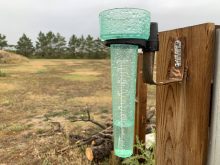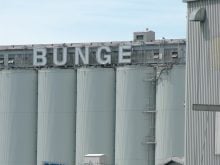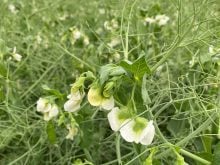Soy Canada held its annual general meeting in Regina last month, a location that some might never have predicted.
But outgoing president Mark Huston from Thamesville, Ont., said it was an obvious choice to tie the meeting in with Canada’s Farm Progress Show and some crop tours.
“Two of the most memorable aspects of the 2017 crop will be the dramatic explosion of acreage in Saskatchewan, combined with enduring summer-long lack of rainfall in the southern part of the province,” he said.
“And also the decline of the average protein content in both Eastern and Western Canada.”
Read Also

AgCanadaTV: Your Agriculture News Recap for Oct. 17, 2025
https://youtu.be/GevFlt7b2-U U.S. bill could keep out Canadian truck drivers A bill tabled in the U.S. house of representatives this month would keep…
Soybean acreage in the province did indeed explode from 240,000 acres in 2016 to 870,000 acres last year. Estimates suggest about 504,000 acres were planted this year, and Huston said even though that’s a drop, it’s still double from two years ago.
Canadian production last year was about 7.7 million tonnes, mostly from Ontario and Manitoba.
However, new shorter-season soybeans have captured the attention of growers in non-traditional areas like Saskatchewan. This year, Alberta planted 20,000 to 25,000 acres.
“It’s a crop that has a presence now,” said Soy Canada executive director Ron Davidson. “The trend is there.”
Soy Canada formed four years ago and represents the entire soybean value chain in the country.
It has a 10-year goal of 10 million acres and more than 10 million tonnes by 2027.
The organization promotes a crush plant in Western Canada as a way to capture more value and opportunity from soybeans.
Huston said companies have been hesitant because of the ups and downs of the industry. Export markets have been strong and reliable.
“When you get into those downs it can be a challenge on the processors,” he said.
“Absolutely as we move forward a crush facility is going to be key to extracting a little more of that value and keeping that value here in Canada.”
Saskatchewan Agriculture Minister Lyle Stewart told the meeting the province has invested about $500,000 in soybean research projects this year.
And Corteva, the agriculture division of DowDuPont, has hired soybean breeder Eric Shaw to be based in Saskatoon.
Shaw said the low protein levels seen in last year’s crop are an issue not just in Western Canada and not just in soybeans.
“Canola protein levels have been decreasing for years,” the former canola breeder said.
That’s because variety selections have been made on yield rather than protein.
“There has to be a balanced approach,” he said.
Huston said protein is an issue from a market access standpoint.
“We’ve got to manage the protein so we can actually supply buyers with the protein they want,” he said.
karen.briere@producer.com















